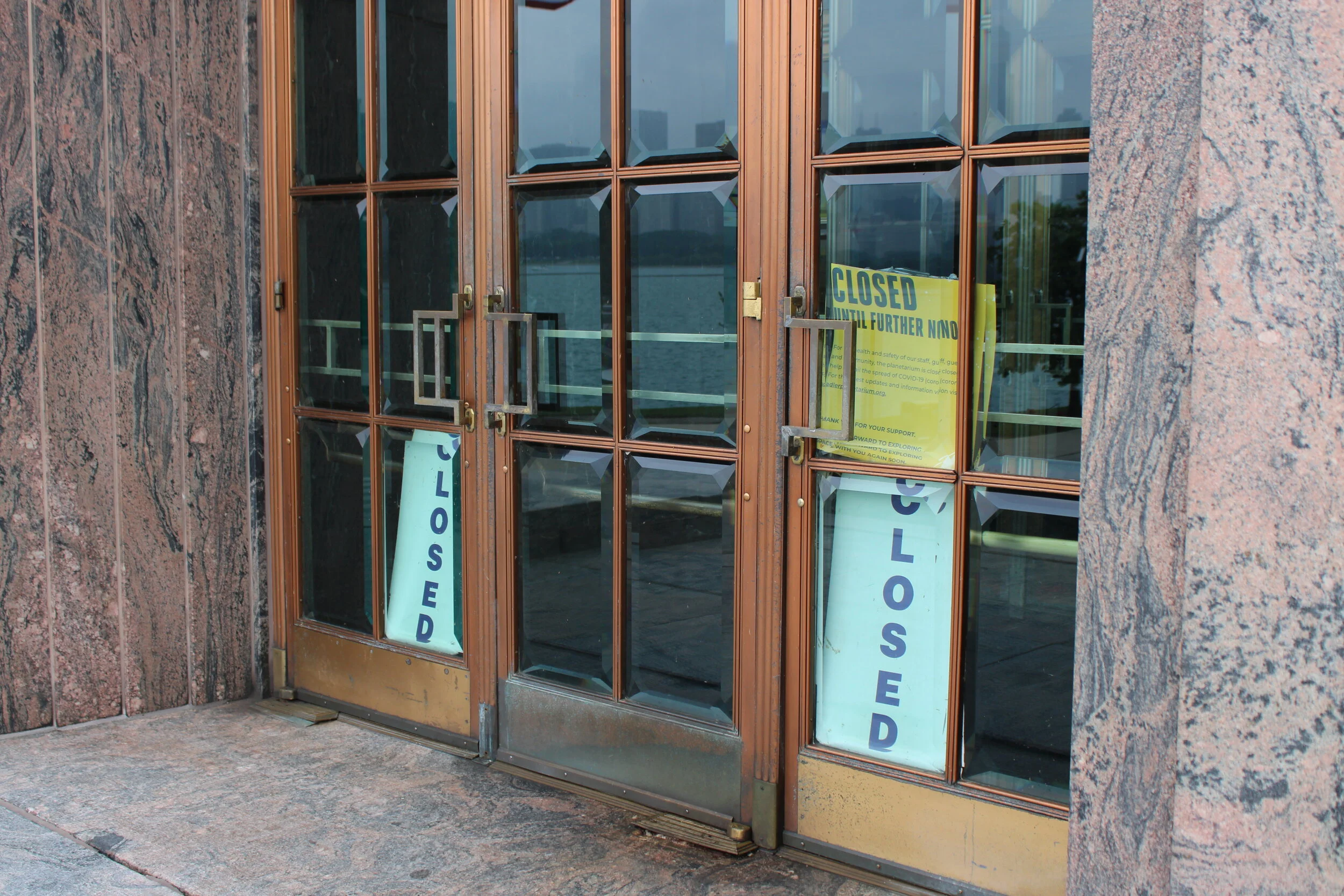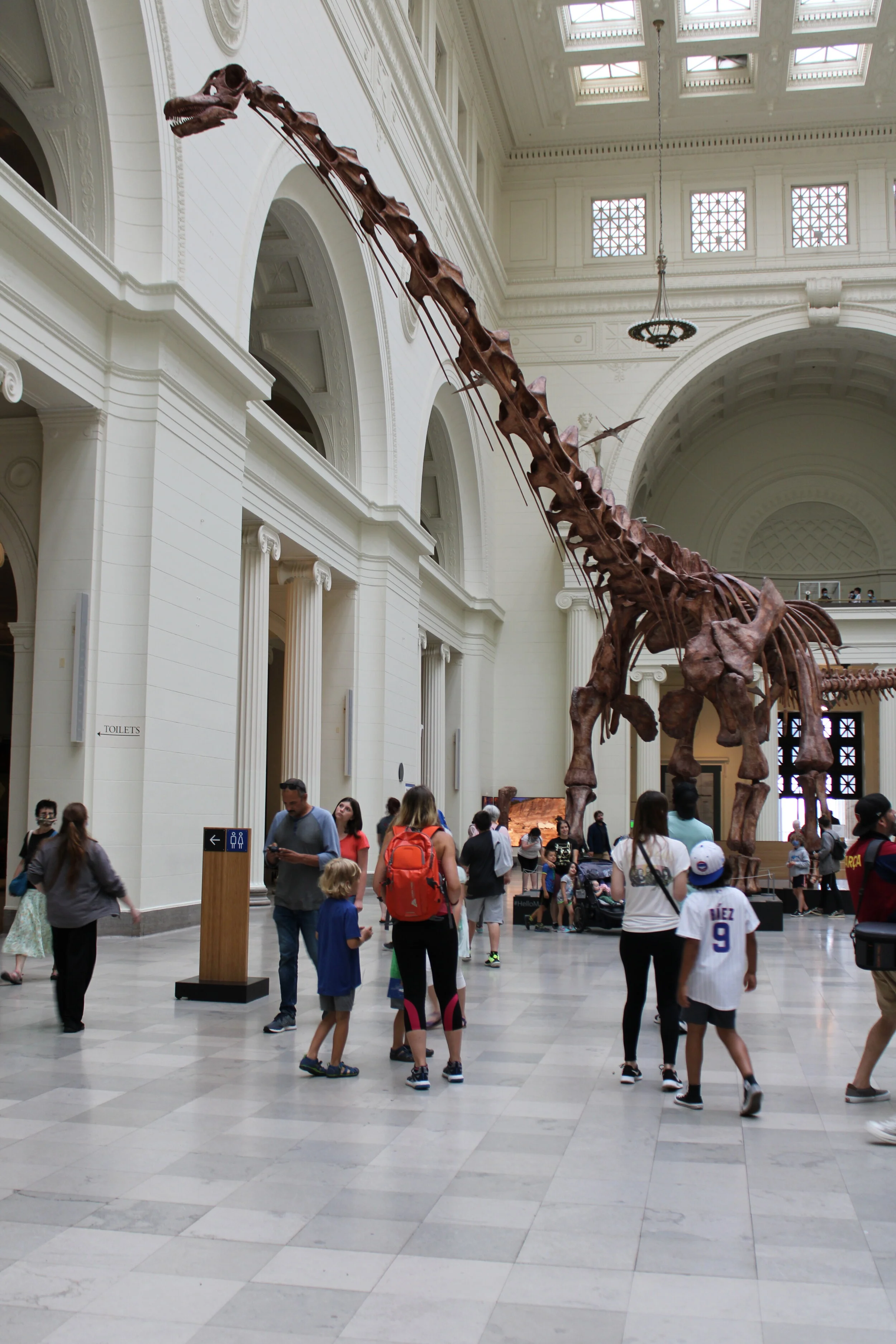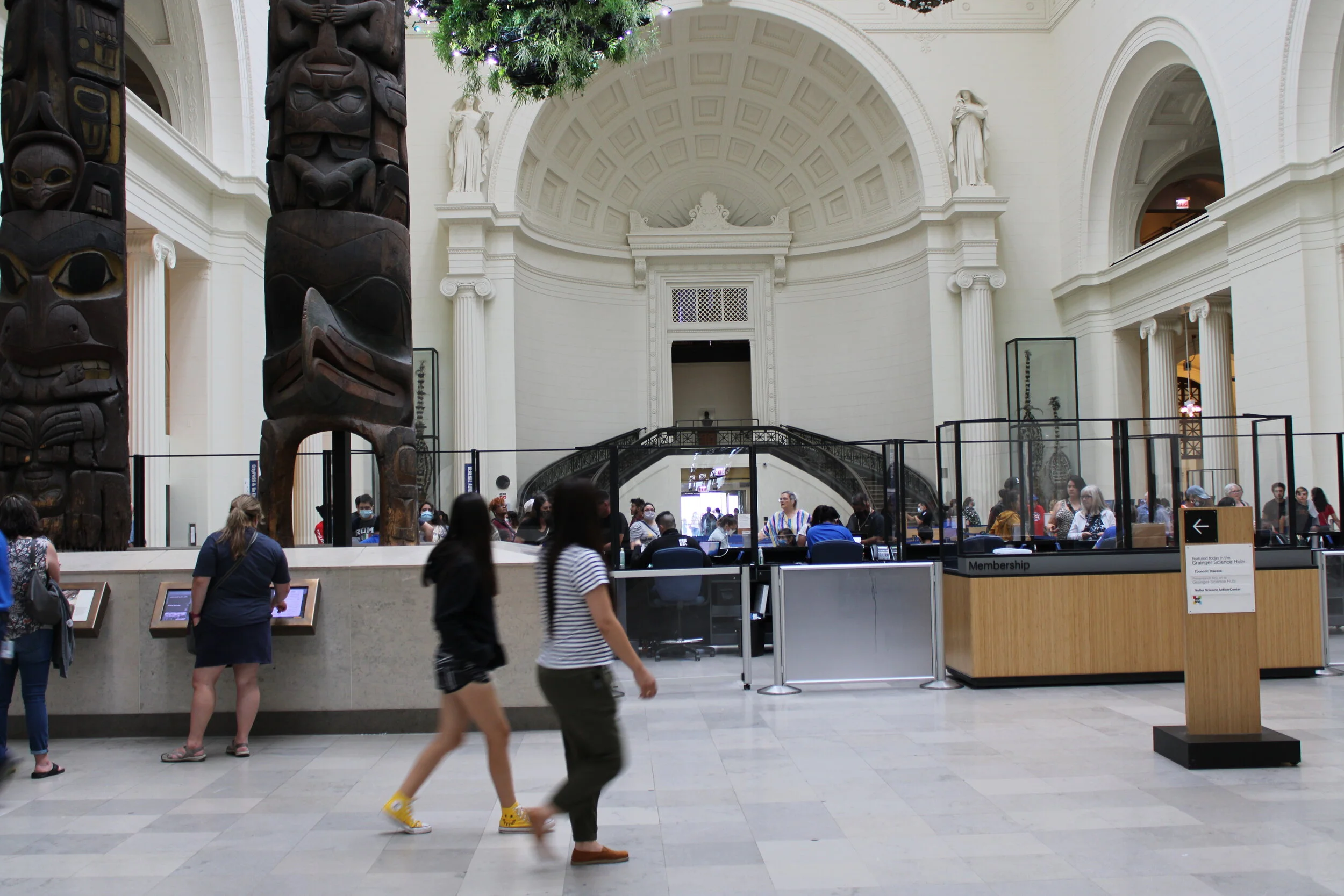How Chicago’s Museums Reinvented Themselves During the Pandemic
After museums closed during the pandemic, they were forced to adjust to virtual programming — and some of it is here to stay.
Story and photos by Iliana Garner
Chris Bresky was about to go on paternity leave at his job with the Adler Planetarium in Chicago when the pandemic began.
“I was working on a brand new program at Adler that was going to be interactive and hands-on,” says Bresky, Adler’s creative producer and content developer. “Then I got the hard news that it would be our last day.” Like many, Bresky was assured that he would be back in two weeks. More than a year later, he is still working remotely.
On March 13, 2020, Chicago's most prominent museums — including the Field Museum, Adler Planetarium, Art Institute of Chicago and Shedd Aquarium — started to close because of the COVID-19 outbreak.
“Closed” signage remained on the doors of the Adler’s entrance. The Adler Planetarium has remained closed for in-person visitation since the beginning of the pandemic.
Adler alone lost around two-thirds of its staff in July 2020 as revenue dried up, Bresky says. All the while, the planetarium’s staff members had to find new ways to present their exhibits and programming for an audience that could no longer visit the museum in person.
As with many organizations, it was a wrenching change that was hard to envision even a few weeks before the pandemic set in. But it also helped Adler’s staff members reinvent their programming in ways they never could have imagined.
“Having to pivot to a virtual space … encouraged us to think a little differently about how to engage an audience and what engagement can look like,” Bresky says.
Among the significant changes were virtual field trips. Teachers could buy tickets online for their classes to explore a 3D representation of the planetarium. Adler welcomed 80 groups between April and June 2021, 40 of them outside of the Chicago Public Schools system — including schools from Indiana, Michigan, California, New Hampshire, Canada and Mexico, according to Sarah Smail, manager of experience development.
After logging in, students choose a virtual avatar — anything from their favorite animal to a marshmallow — and walk through the exhibit, interacting with different objects while learning about space. At the end of the tour, participants can fly through a replica of the solar system, something they would be unable to do in person.
“You get to laugh and talk to each other, and feel like you're in the same room with each other for the first time since COVID began,” Bresky says.
While in-person visitation was still not available in July, even after Chicago had loosened pandemic restrictions, the planetarium has offered weekend screenings of its sky shows and some public observation events since July 13. The planetarium plans to fully reopen to the public next March. A sooner opening date would place a strain on Adler’s limited resources and reduced staff, according to the planetarium’s website.
Guests observing the Field Museum’s titanosaur, Maximo, one of its signature exhibits, who greets visitors in the main entry hall.
Other museums, like the Field Museum, have been able to fully reopen to the public.
On July 12, hundreds of visitors, masked and unmasked, milled around the exhibits at the Field Museum, experiencing them in a way that virtual tours cannot replicate. (Masks were optional for fully vaccinated guests.)
“Have you touched its belly? It’s very furry,” says Anna Villanyi, the gallery learning experiences coordinator, in the Grainger Science Hub. They were referring to a taxidermy bat lying flat on a tray. Nearby, children freely examined and touched fossils and rocks.
“I missed seeing human beings in person, period,” Villanyi says, regarding the Field’s shift to virtual programming. She adds that it was less interactive with the limitations of Zoom: “We had some amount of guest input and reactions — but much less than when interacting in person.”
Anna Villanyi, the gallery learning experiences coordinator, with an interactive bat exhibit at the Grainger Science Hub.
Between the beginning of the pandemic and the Field’s reopening, Villanyi says they had made a switch to virtual content. In addition to holding weekly Facebook Live chats, the museum also switched to virtual programming. The museum is continuing its Facebook Live chats with museum insiders and its Field Museum Learning Connection, which provides resources to teachers, Villanyi says.
Alizé Gonzalez was a member of the Field Museum’s Youth Council when the pandemic began. Council members started meeting two times a week on Google Meet after they received clearance from the Field to continue their programming virtually.
“Because we weren’t in person, there have been meetings where not everybody would be attending,” she says. “Everybody had their own thing going on: school, family members they are worried about.” This challenge affected their ability to receive everyone’s input to quickly make decisions.
But Gonzalez says the continuation of virtual programming provided hope to those participating. “I'm really grateful that the museums wanted to have something for teens and other people during the pandemic,” she says.
The Field Museum started welcoming visitors for in-person visitation on Jan. 27, 2021.
While there are drawbacks to virtual programming, Bresky says, “you are able to reach people who may not be able to get to the Adler.” He cites the global audience that can now experience the planetarium’s exhibits — all from home.
Adler “is working to weave digital content creation into the jobs of the floor facilitators,” Bresky says. “Those that normally are wonderful at explaining science to guests on the floor of the museum can also play a part in crafting the content that is shared digitally.”
Adler will also continue to host classrooms around the world with fully virtual reality field trips, even after the pandemic ends.
Despite all the changes in the planetarium’s programming, its mission has stayed the same.
“Space is distant, cold and feels removed from life on Earth,” Bresky says. “It's Adler's role to bring space closer, to build a human connection in this universe we all share through shared curiosity.”





